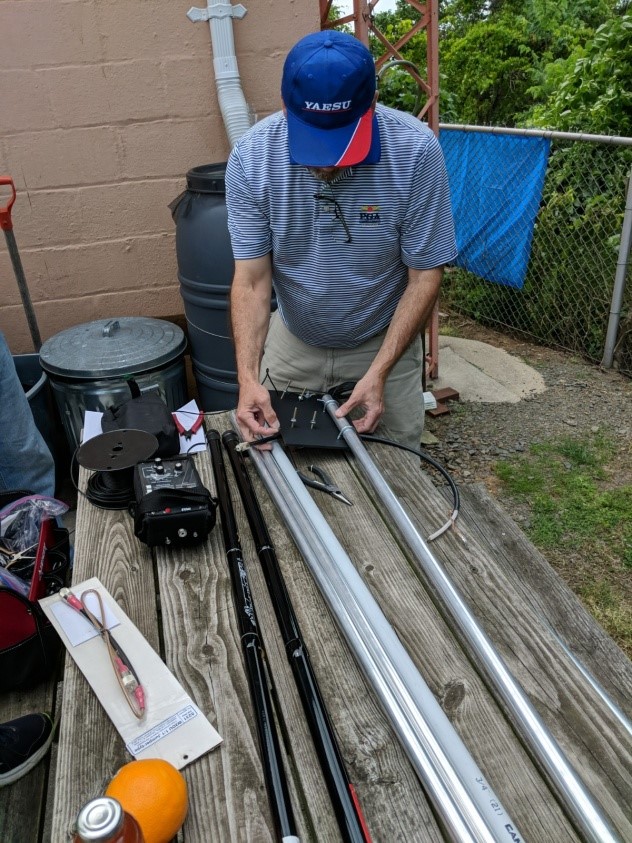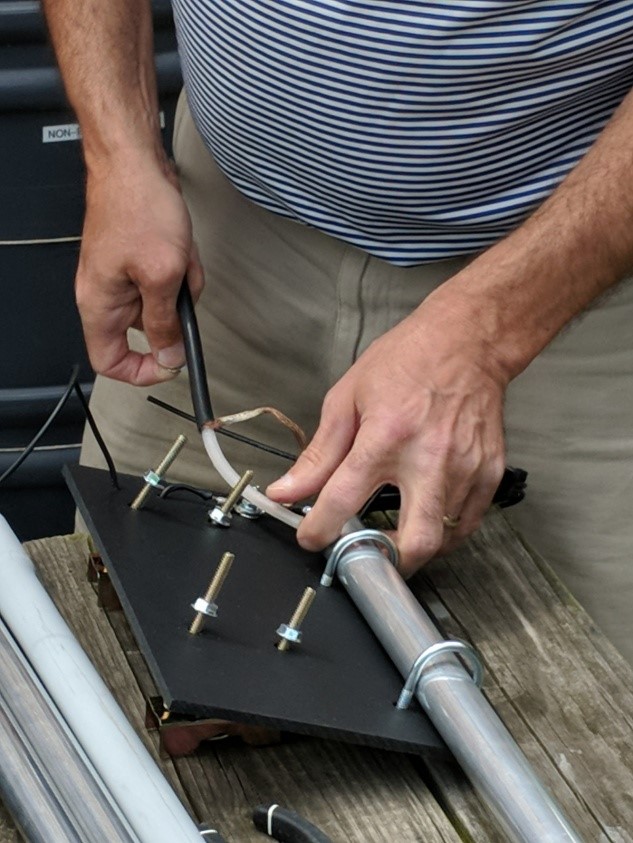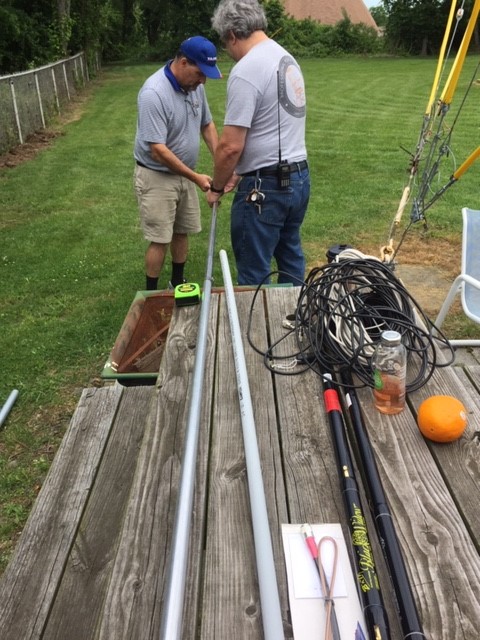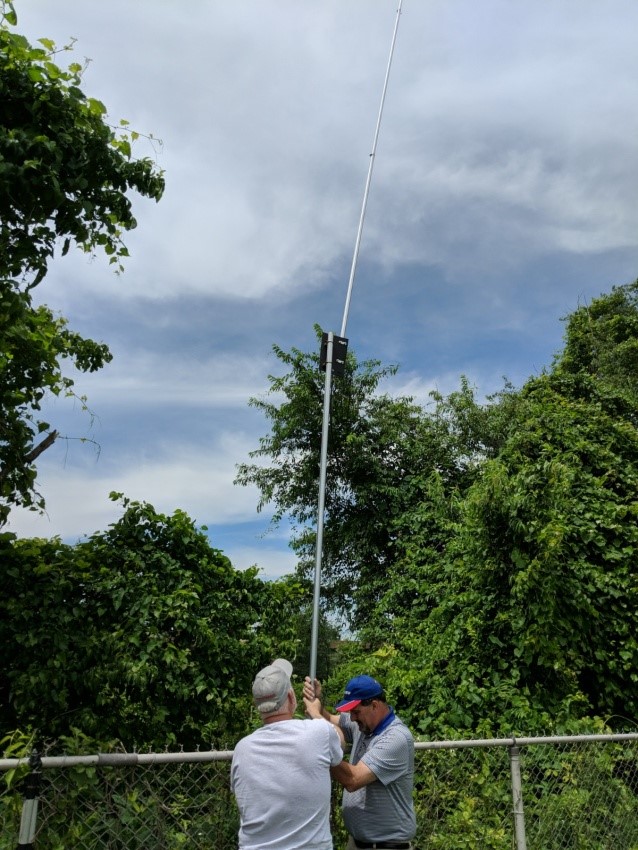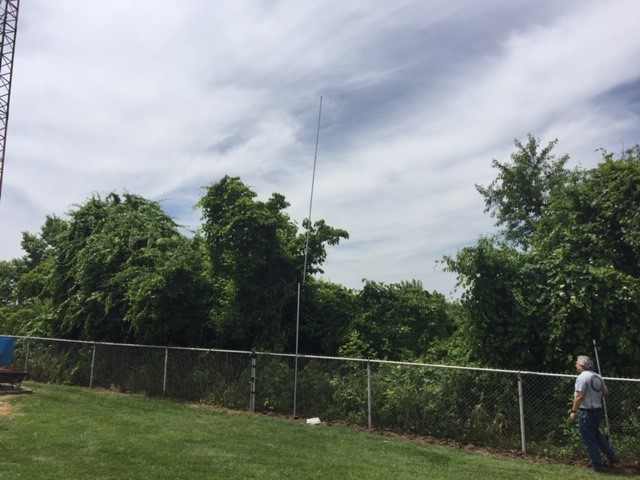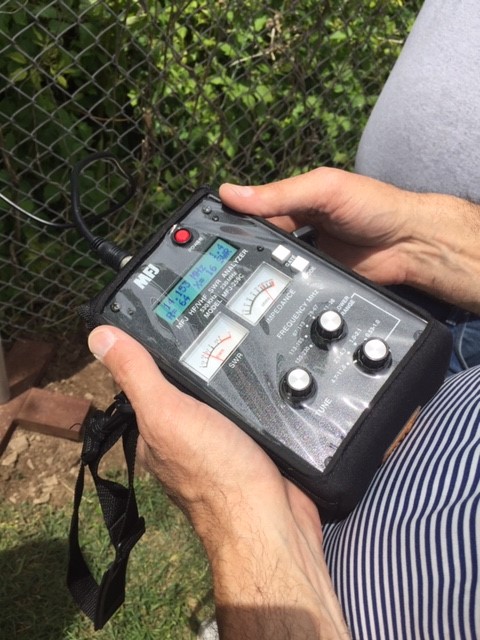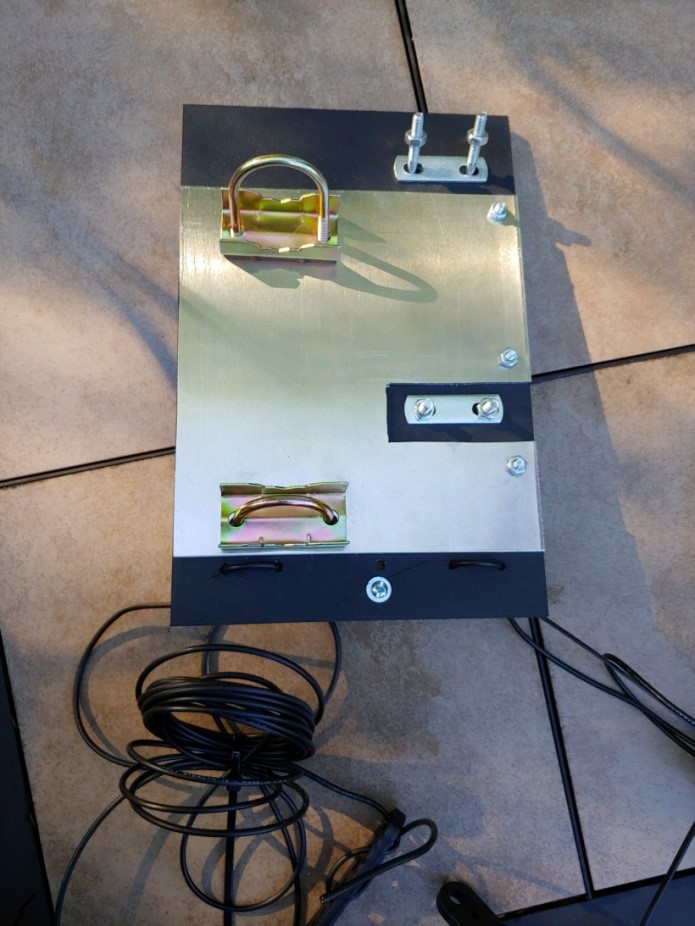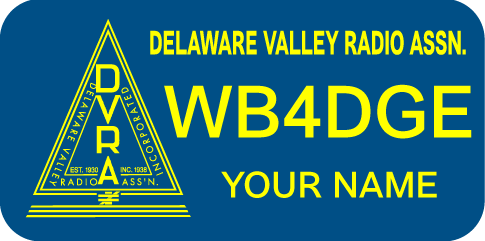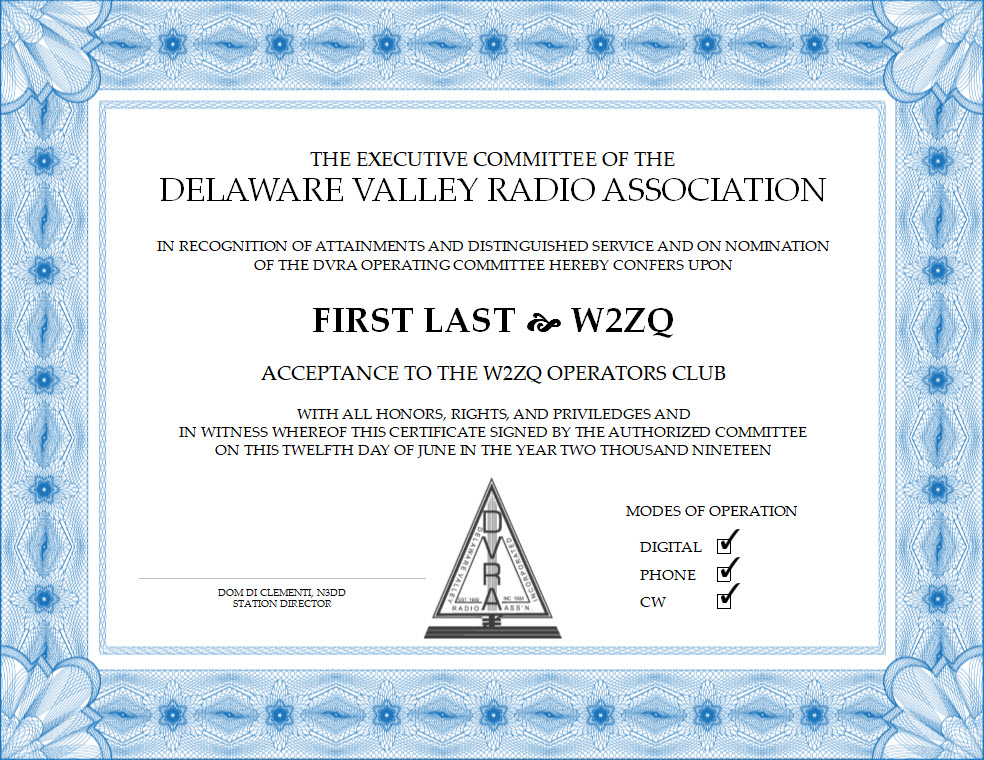The Antenna Committee met at the DVRA shack on Saturday, June 8th. In attendance were members Rich Freedman, N2EHL; Greg Mauro, K3EA; Steve McCann, KC3LPO and Jack Tatar, K2WLD. At the event, a ¼ wavelength, 20 meter elevated vertical was measured, built and tested. The vertical was placed about 35 feet from the shack along the metal fence and mounted atop a 10’, 1.25” diameter steel conduit as the mast. The vertical element was constructed from 0.058” thick aluminum tubing, in three 6’ long sections, tapered from 1.125” to 0.875” diameter. Two radials were utilized with 13AWG Polystealth antenna wire. The vertical element and the radials were mechanically coupled to the mast on a ¼” thick polymer plate. Both the vertical element and the radials are electrically isolated from the mast.
The vertical element was quickly measured and assembled with hose clamps at 16.5’. The radials were likewise cut to ~16.5’. The antenna was raised and secured to the fence with friction straps. It was noted that the vertical-to-mast polymer interface plate was not sufficiently carrying the load of the vertical element. The polymer plate was becoming deformed. In any event, the assembly was not in danger of imminent mechanical failure, so we proceeded with electrical testing.
A preliminary test with an antenna analyzer showed a good match across the 20 meter band. No tuning was needed! A length of coax was used to connect to station B. A quick on-air test yielded a digital mode contact with a station in Ireland. Success!
After the event, the mast-to-antenna interface plate was modified to include a 1/8” thick aluminum brace to stiffen the plate (see second photo). The antenna construction is now sufficiently strong enough to be installed as a permanent solution. For a permanent installation, it is best to mount the radials safely above head height – approximately seven feet. The radials should be horizontal to the ground, but can have a slight droop. Because there are very few pieces and assembly can be completed rather quickly, this antenna could also be used in a temporary setup. For a temporary setup, the mast can be shorter for portability. This places the radials closer to the ground, so care should be taken to keep them as out of the way as possible so that people won’t stumble into them. Again, the radials should be as horizontal as possible to the ground.
A vertical antenna’s maximum gain is at a low take off angle and therefore a good DX antenna. Optimally, an elevated vertical antenna will perform as an omni-directional antenna with three or four, equally spaced, radials. With only two radials, the pattern will favor the two directions off the ends of the radials. Overall it is a good DX antenna with a small physical “footprint”. A good source on the subject of elevated verticals is documented in a paper by Al Christman, KB8I: “Elevated Vertical Antenna Systems”, found in August 1988 QST. If you don’t have access to QST archives, click here: https://groups.google.com/forum/#!msg/w2zq-membership/rLFzBqxu4Gg/GkeCfjIyAwAJ to download the article from the DVRA Membership Google Group).
Construction details and a parts list will be posted on the W2ZQ Membership Google Groups and the More -> Documents section of the W2ZQ.com website. The antenna that was built is available for anyone who is interested and additional material is available to build two more antennas.
The Antenna Committee was formed to assist club members with antenna projects and to periodically hold construction events. If you need help with a project or have an idea for an antenna construction event contact Greg Mauro at k3ea.dx@gmail.com
